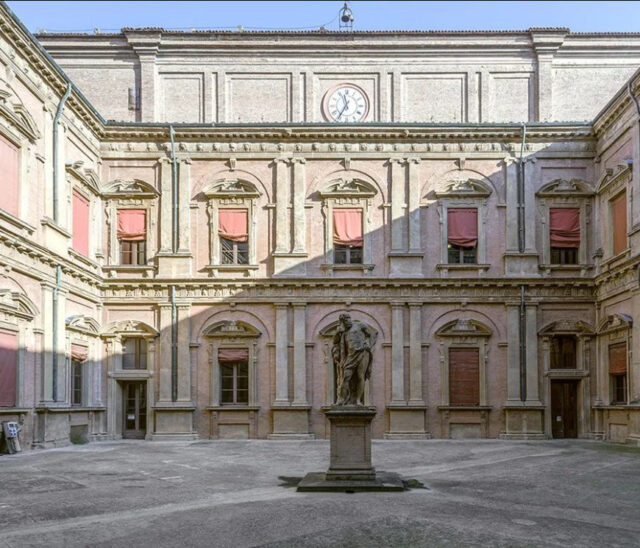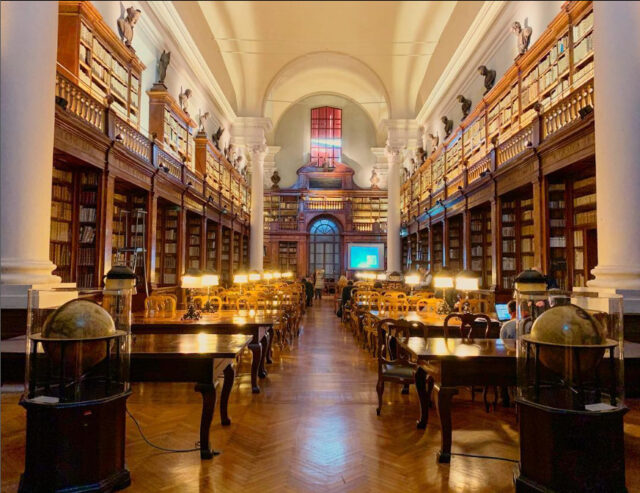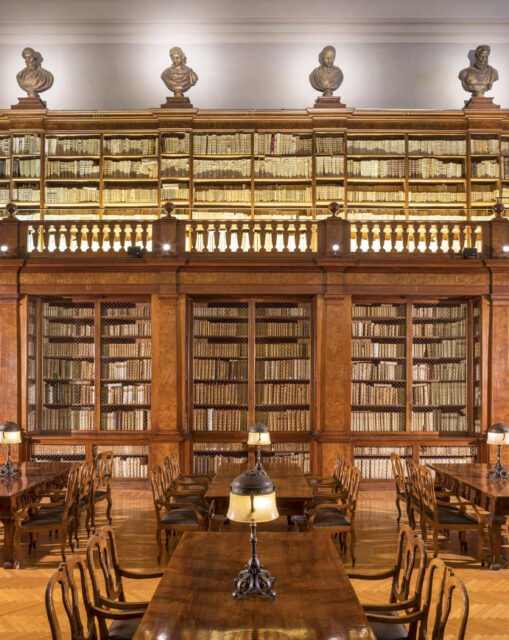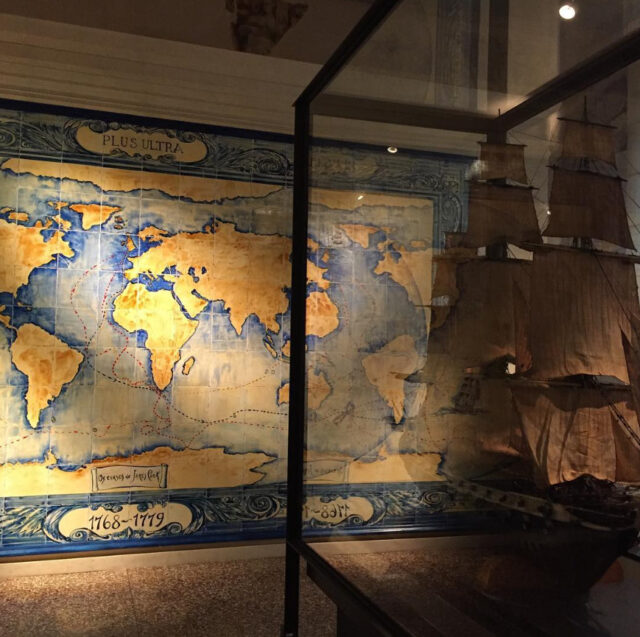Palazzo Poggi
Palazzo Poggi. In 1711 the Bolognese Senate bought Palazzo Poggi to house the Institute of Science and the Arts, commissioned by Luigi Ferdinando Marsili.
After almost three centuries, the large halls, frescoed by the famous painters Pellegrino Tibaldi, Nicolò dell’Abate and Prospero Fontana, once again host the ancient kits of the geography and nautical, military architecture, physics, natural history, chemistry, human anatomy and obstetrics rooms, next to the sixteenth-century Aldrovandian museum.
The Palazzo Poggi Museum consists of the recomposition of the laboratories and collections of the ancient Institute of Sciences, which operated in the same rooms until 1799.


The precious collection of the Institute of Sciences, founded in 1711 by Luigi Ferdinando Marsili, is exhibited in the sixteenth-century palace frescoed by Pellegrino Tibaldi, Nicolò Dell’Abate and Prospero Fontana. Inside, ancient collections were gathered, scientific laboratories were set up, a tower was erected to house the astronomical observatory and an Aula Magna destined to house a rich library.
In the room of the Oriental Art Collection there are works of art from East Asia from two collections, that of the Fondazione del Monte di Bologna and Ravenna and that of the Far-Eastern Art Study Center, entrusted on loan for use to the University of Bologna, and of which a selection will be exhibited from time to time.
The woodcuts of Ukiyo-e (“images of the floating world”) are unique in the panorama of world art. They have two apparently contradictory characteristics: mass production, with circulations of even thousands of copies, and a very high level of quality.
Introduced to Japan from China at the end of the 8th century, it was at the beginning of the 1600s that the xylographic technique became a real art, favored by the peace of the country and by the flourishing of economic activities carried out by a new middle class (the chônin ) excluded from assuming public office.


The most frequent subjects of the prints (beautiful women, actors, landscapes) reflect the passions of this urban population, who rediscovered their taste for the profane pleasures of life.
The marked aesthetic sense of the Japanese is revealed even in everyday objects: lacquers, bronzes, cloisonné , fabrics, often decorated with motifs taken from the plant and animal world, testify to a deep love for nature and a refined sensitivity for seasonal changes and for the tactile qualities of the materials used.
The Picture Gallery of the University of Bologna is a collection of about 700 portraits of illustrious men from the Middle Ages to the early twentieth century.
The first and most substantial nucleus – 403 paintings by cardinals, theologians, scientists and men of letters – dates back to the testamentary bequest of the Bolognese cardinal, Filippo Maria Monti, executed in 1754, in favor of the library of the then Institute of Sciences and Arts.



In addition, over time, the donations of entire collections of portraits of some of the most famous Bolognese families – Bentivoglio, Bolognetti, Campeggi, Caprara, Hercolani, Malvezzi, etc. – which by emulation, link their names to the Institute and to the history of the city.
Over time, other paintings followed, mostly portraits of illustrious professors, and the series of Rectors who have succeeded one another from the Unification of Italy to the present day.
Thus, an important iconographic heritage gradually came to be built up – now exhibited in the halls of the University Library, in those of the Rectorate, at the Palazzo Poggi Museum and at the MEUS – European Student Museum – which houses authoritative visual exempla.
Indeed, in compliance with Cardinal Monti’s intentions, this painted icon library keeps alive the memory of the main figures in the history of literary, scientific and theological knowledge, in constant dialogue with the most illustrious representatives of the Bolognese families and with those who have profoundly marked the history of the Institute of Sciences and the Arts first and then of the University.

